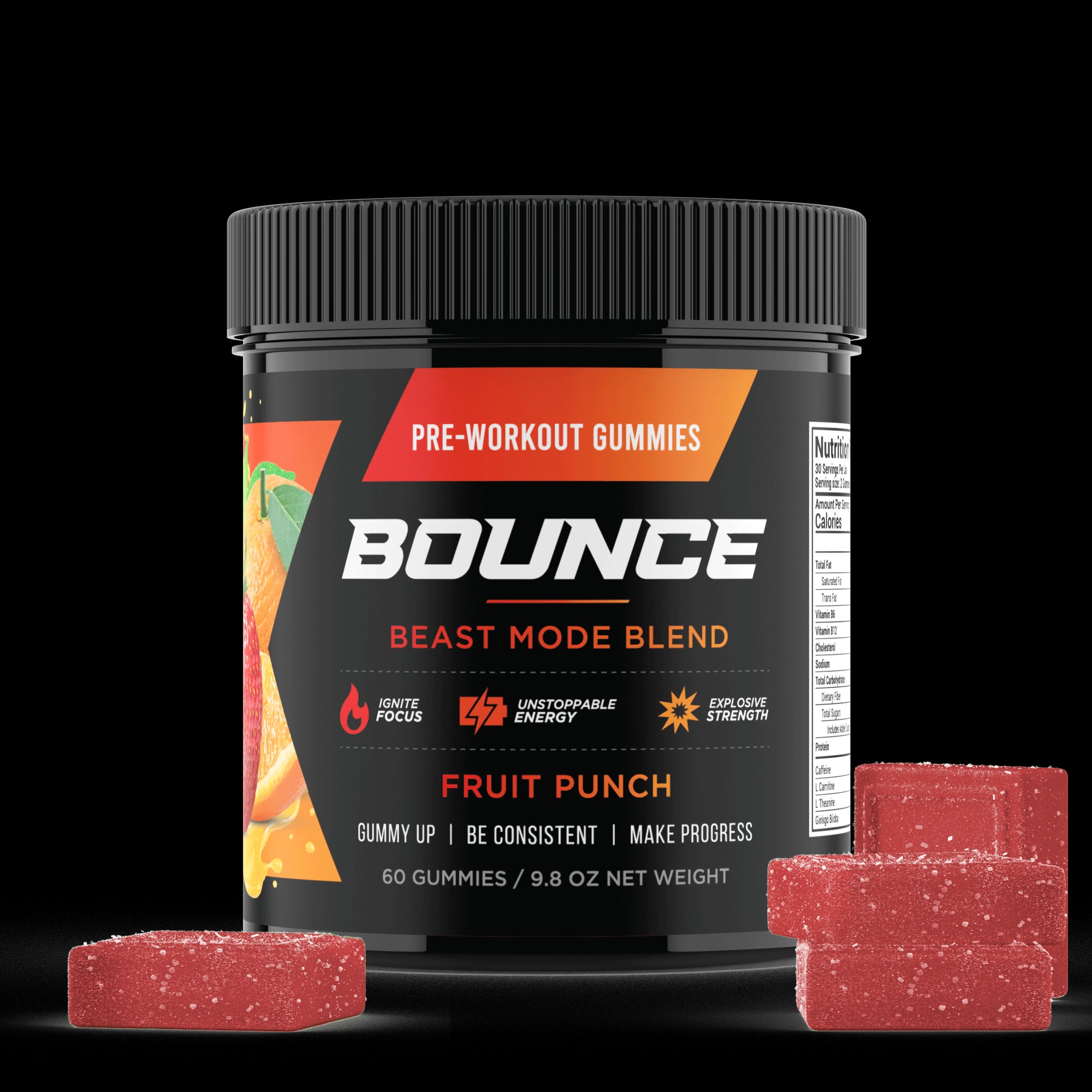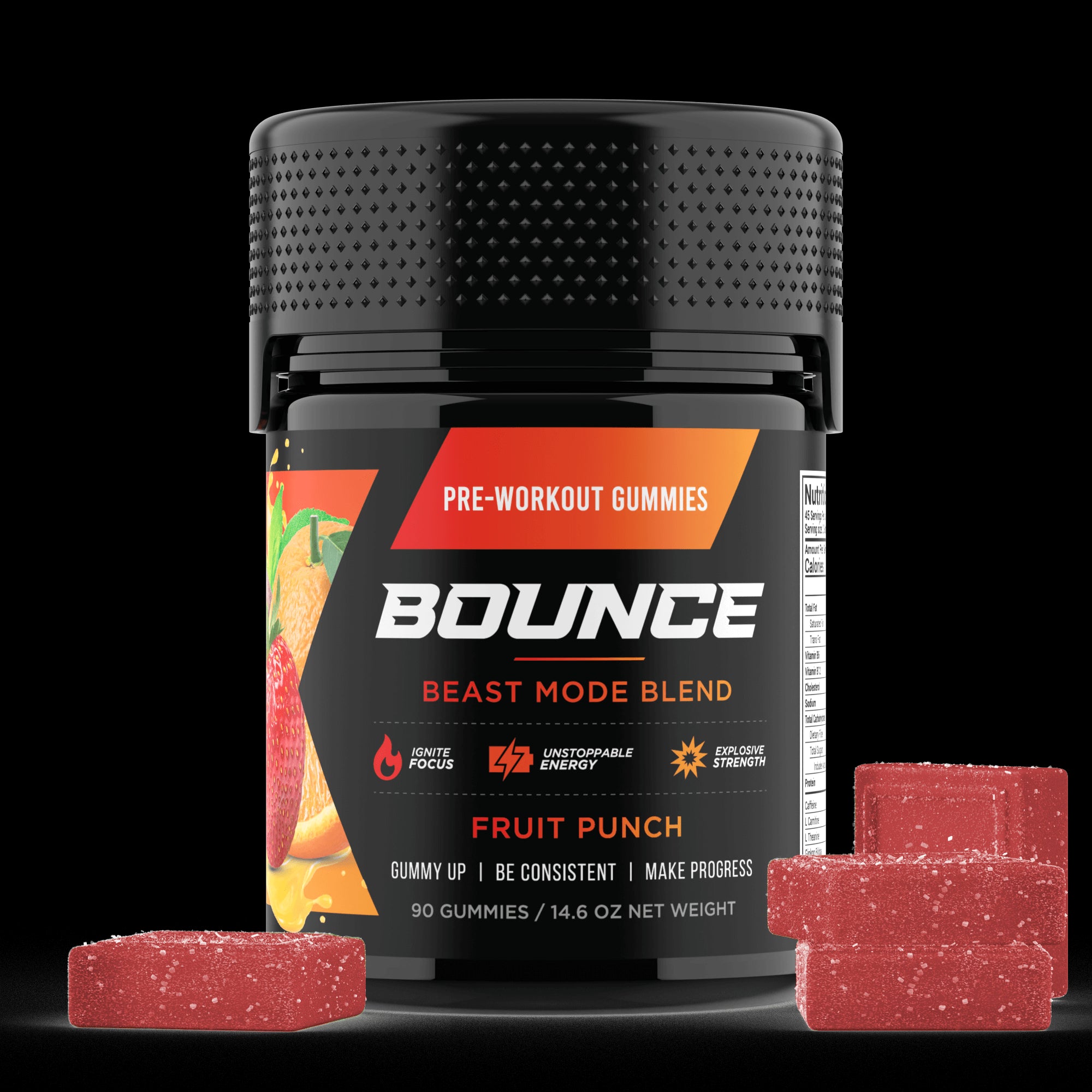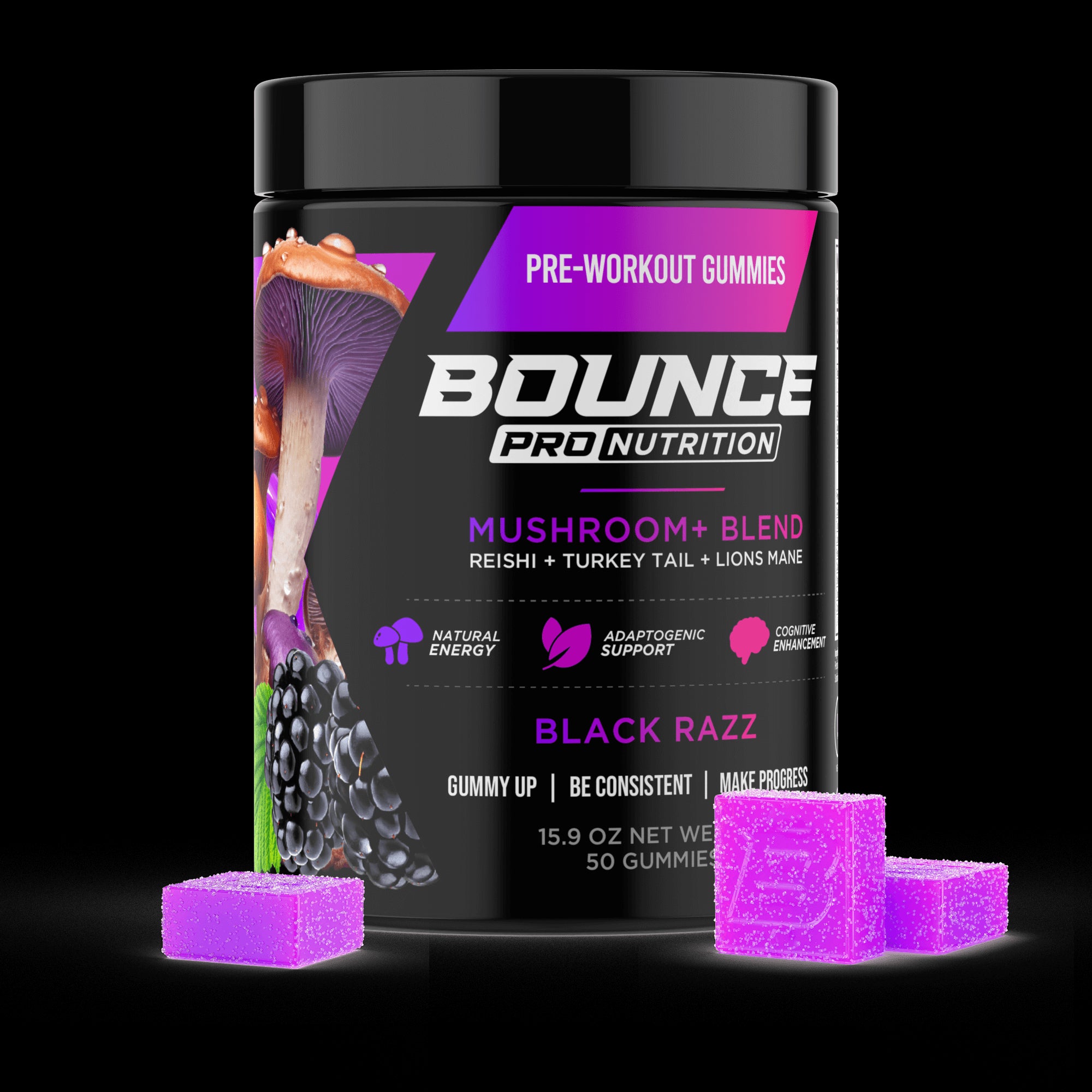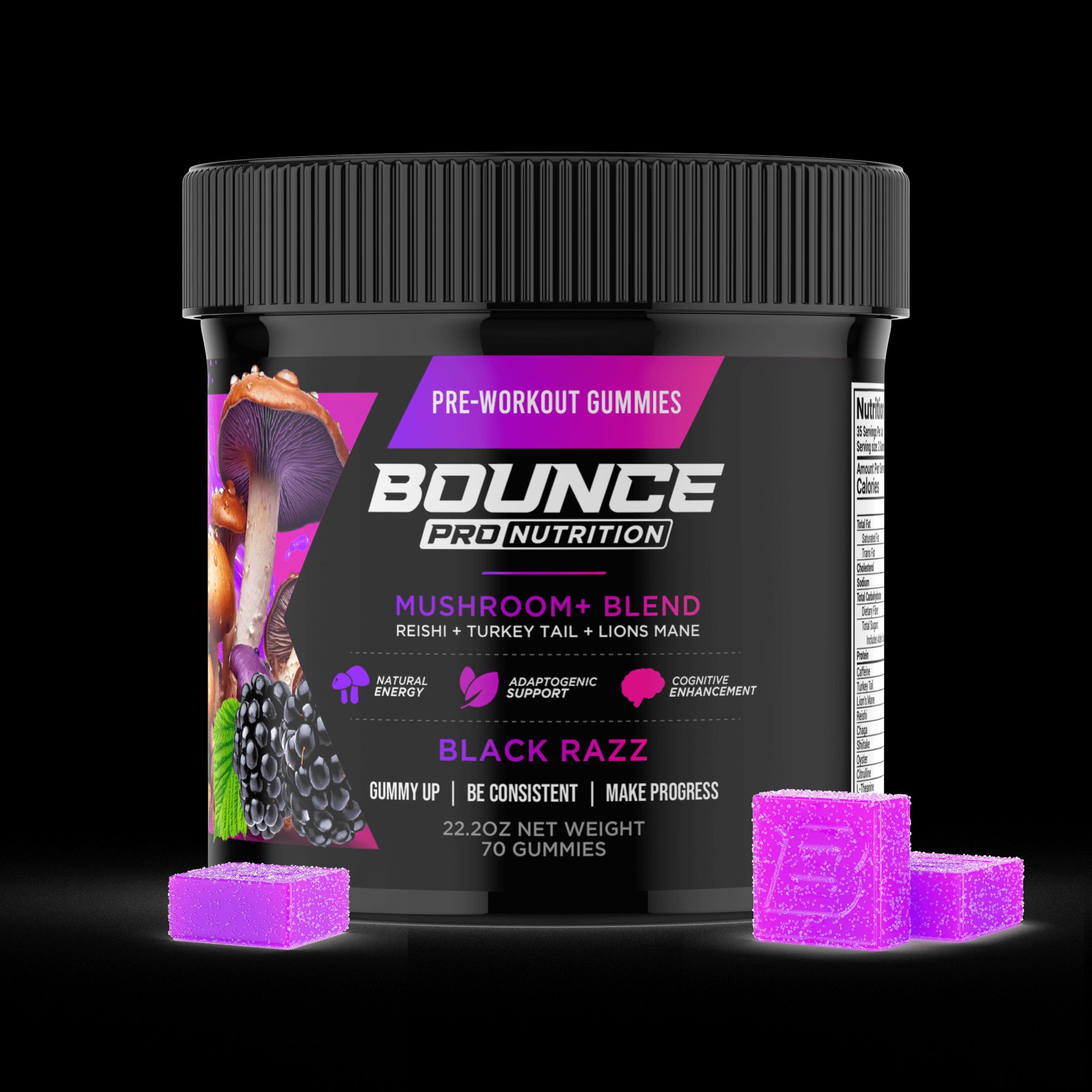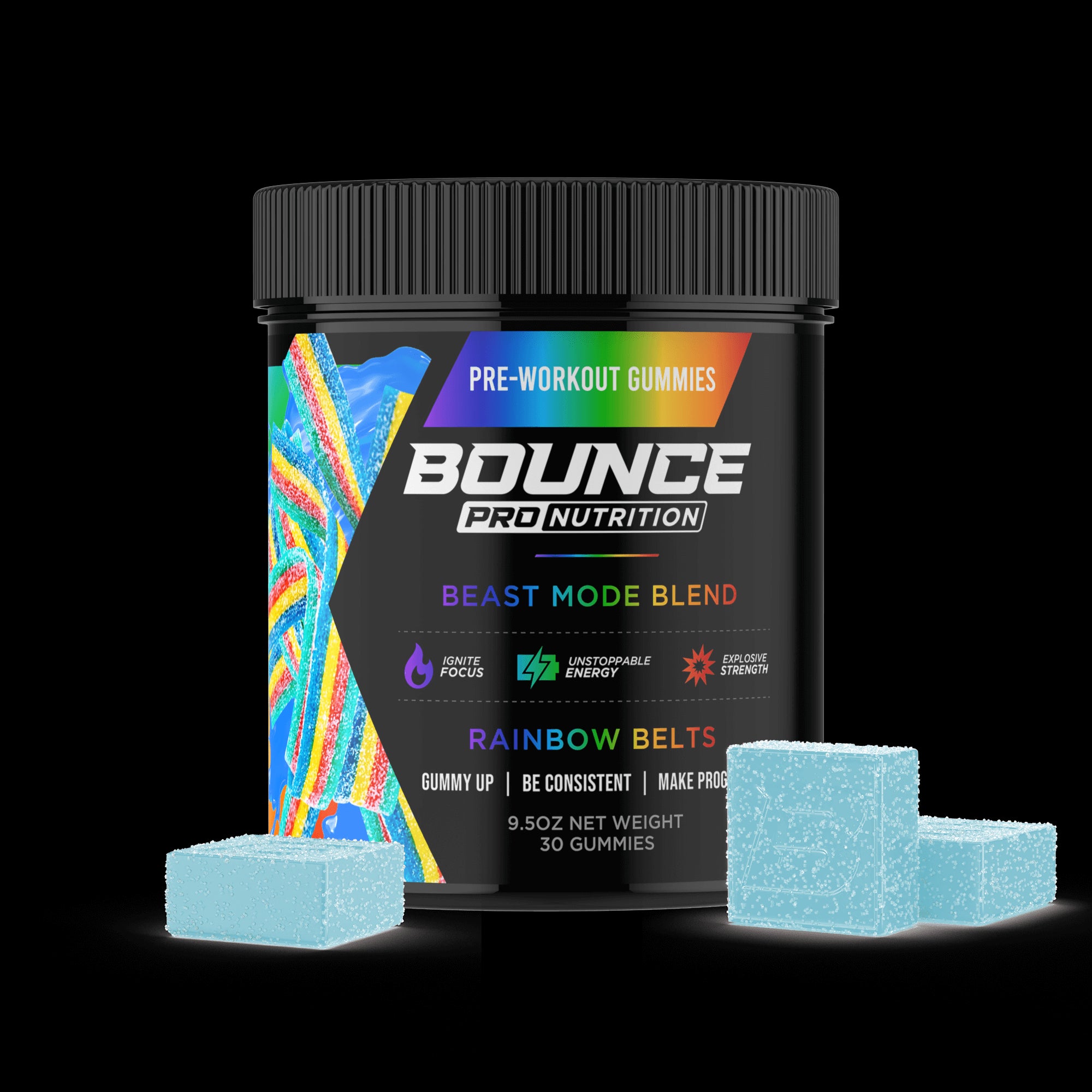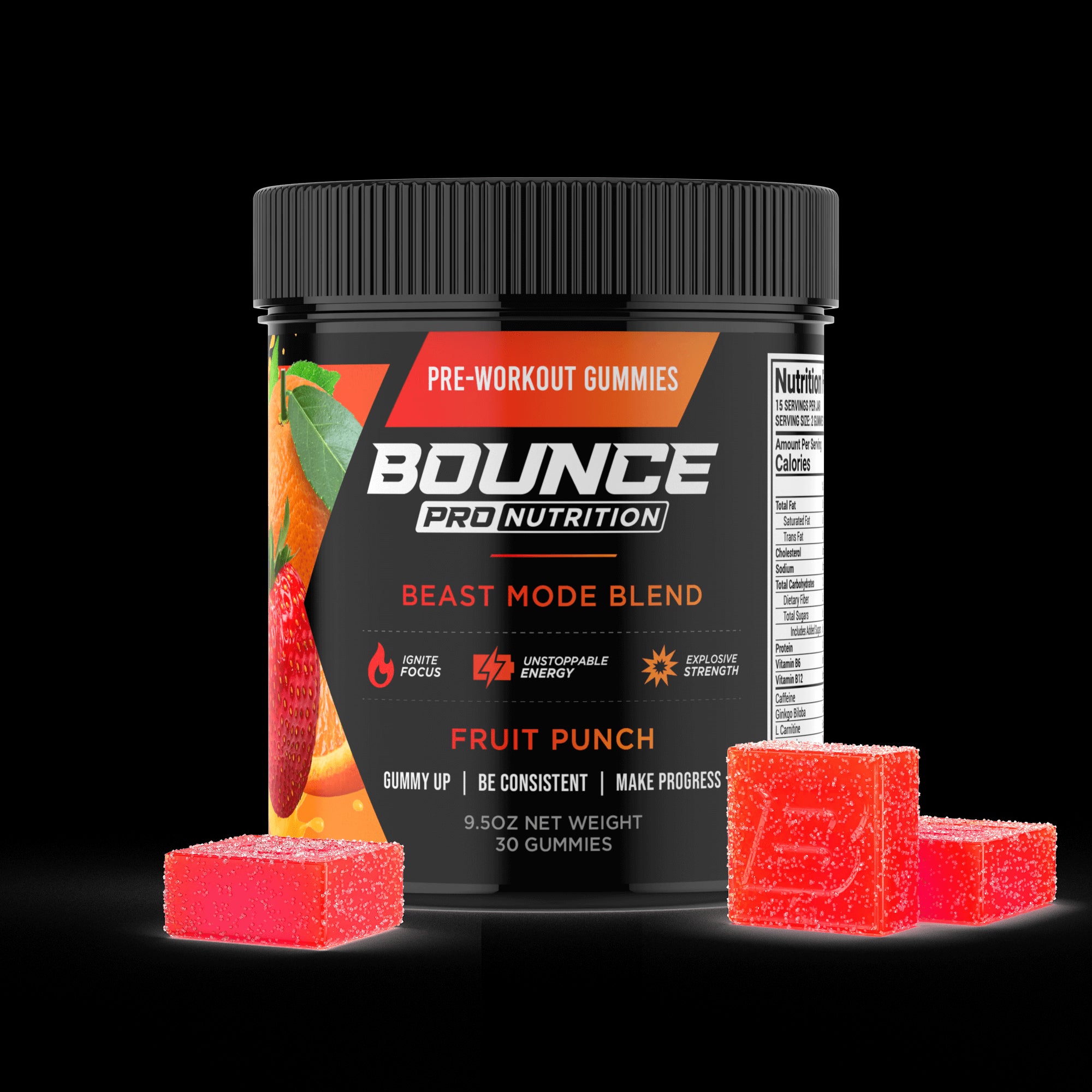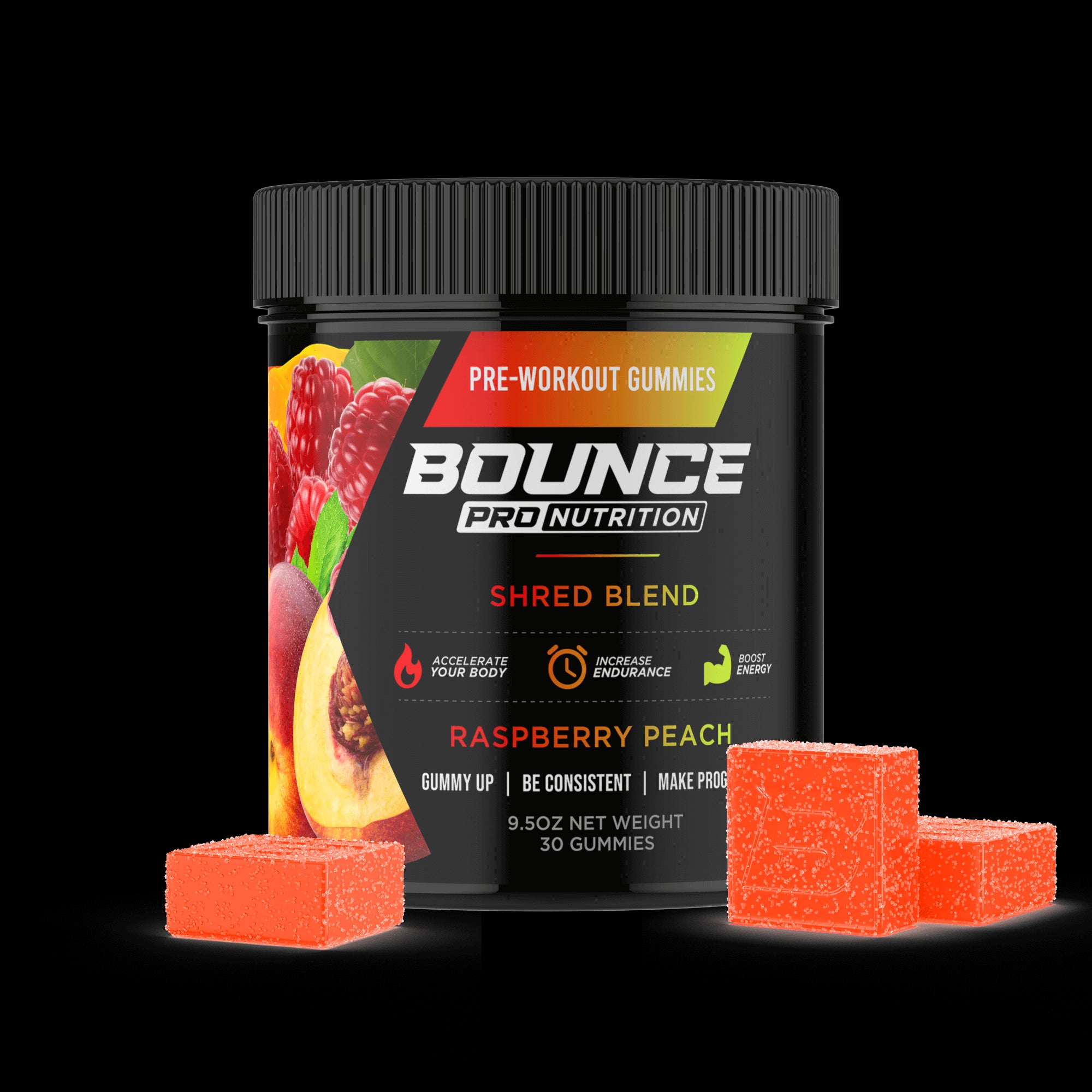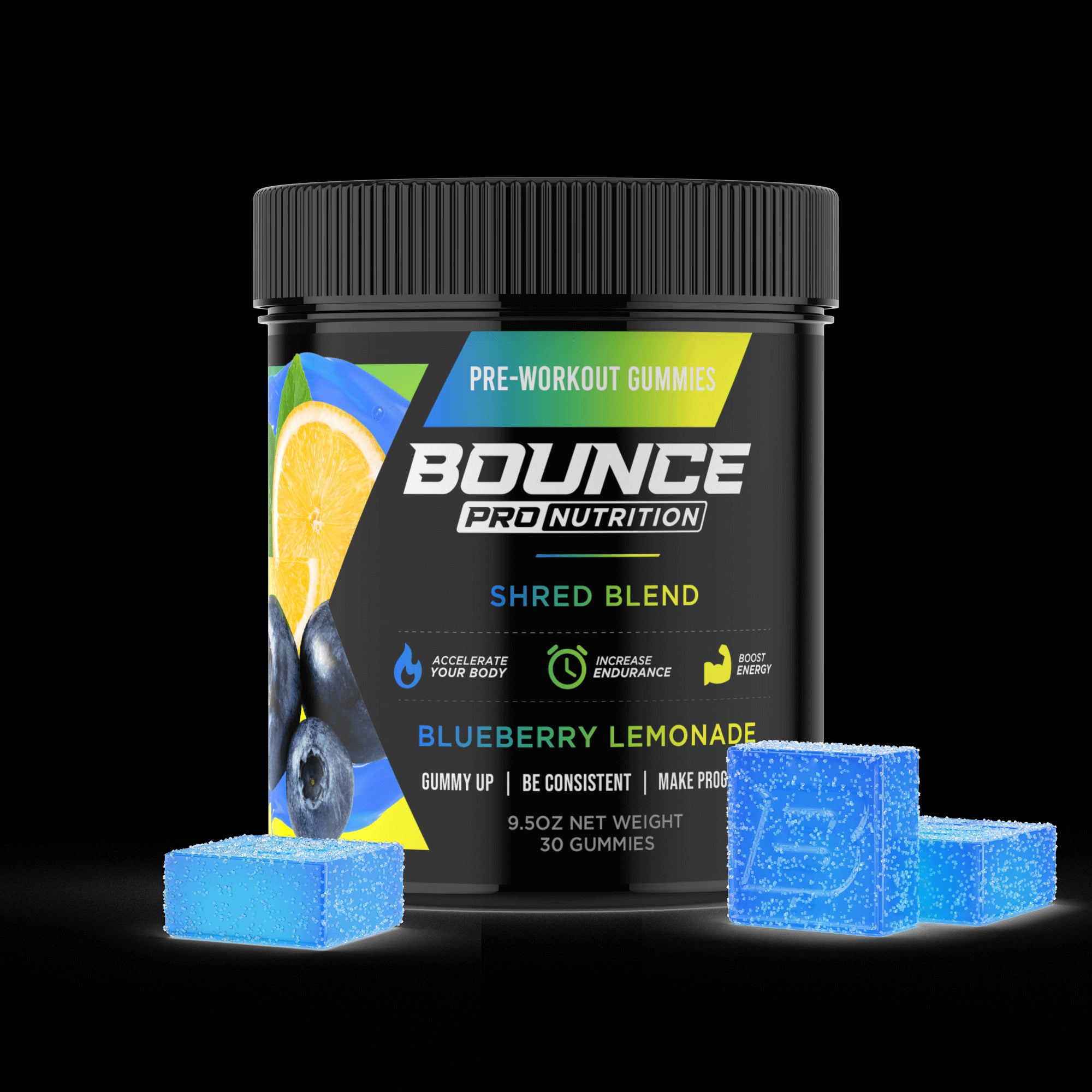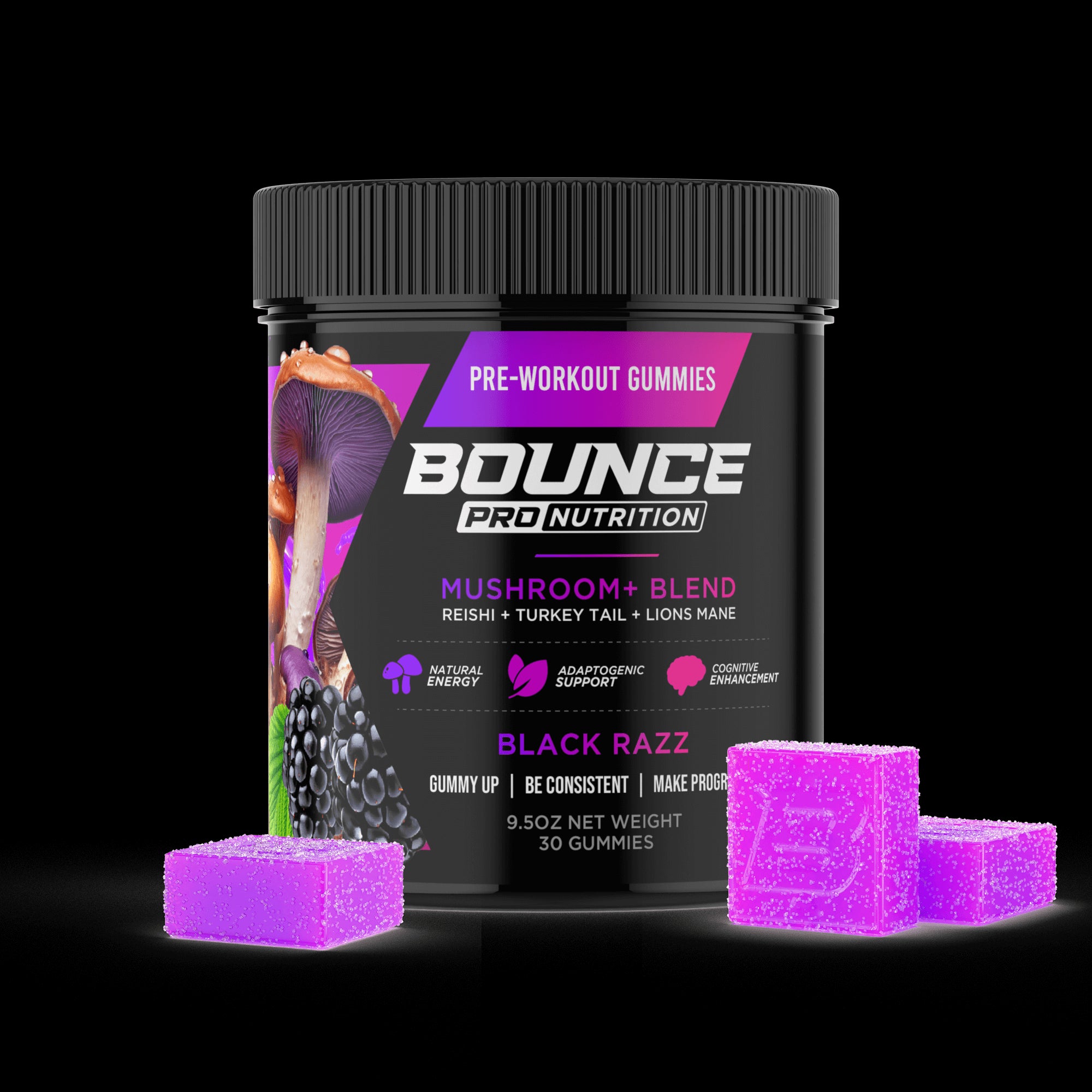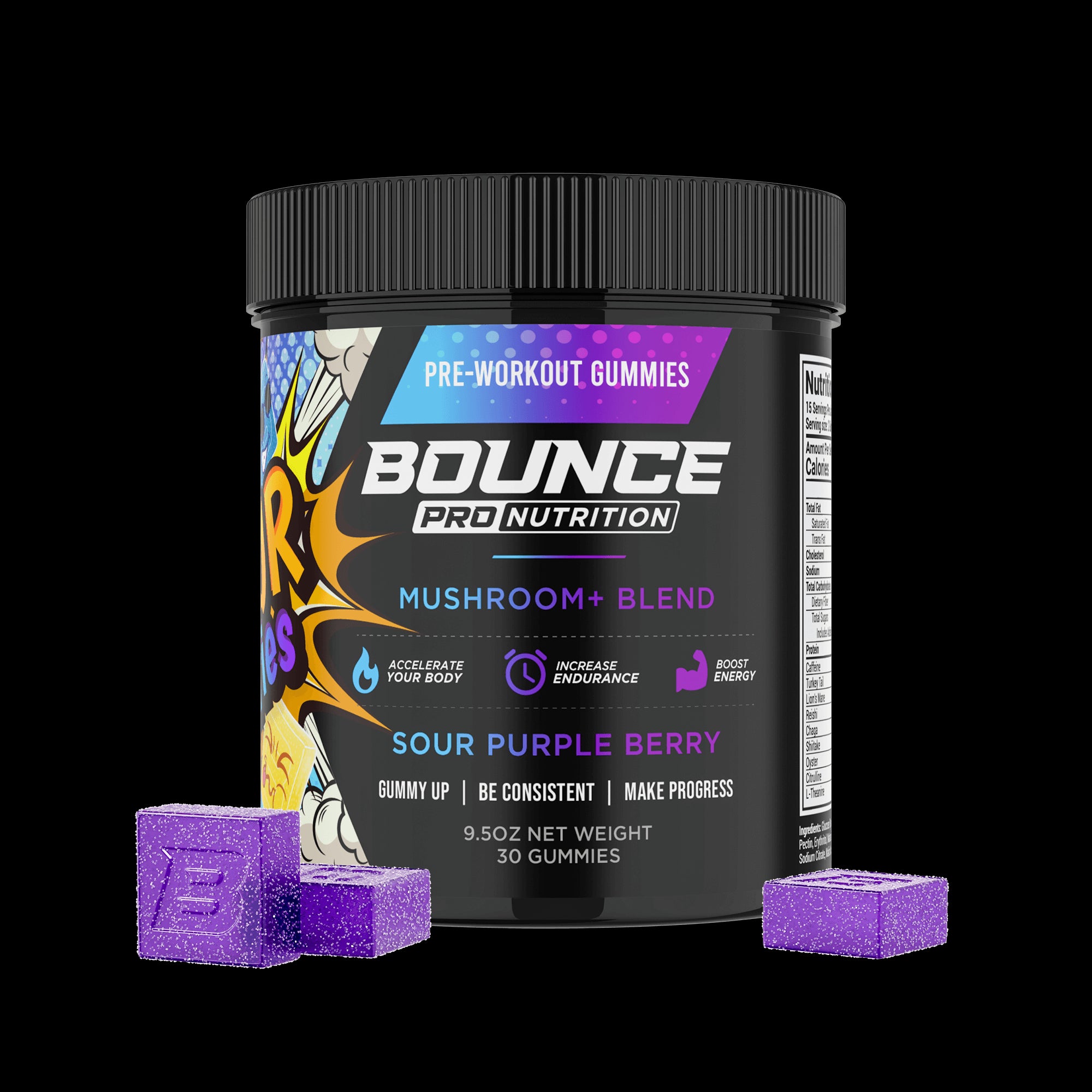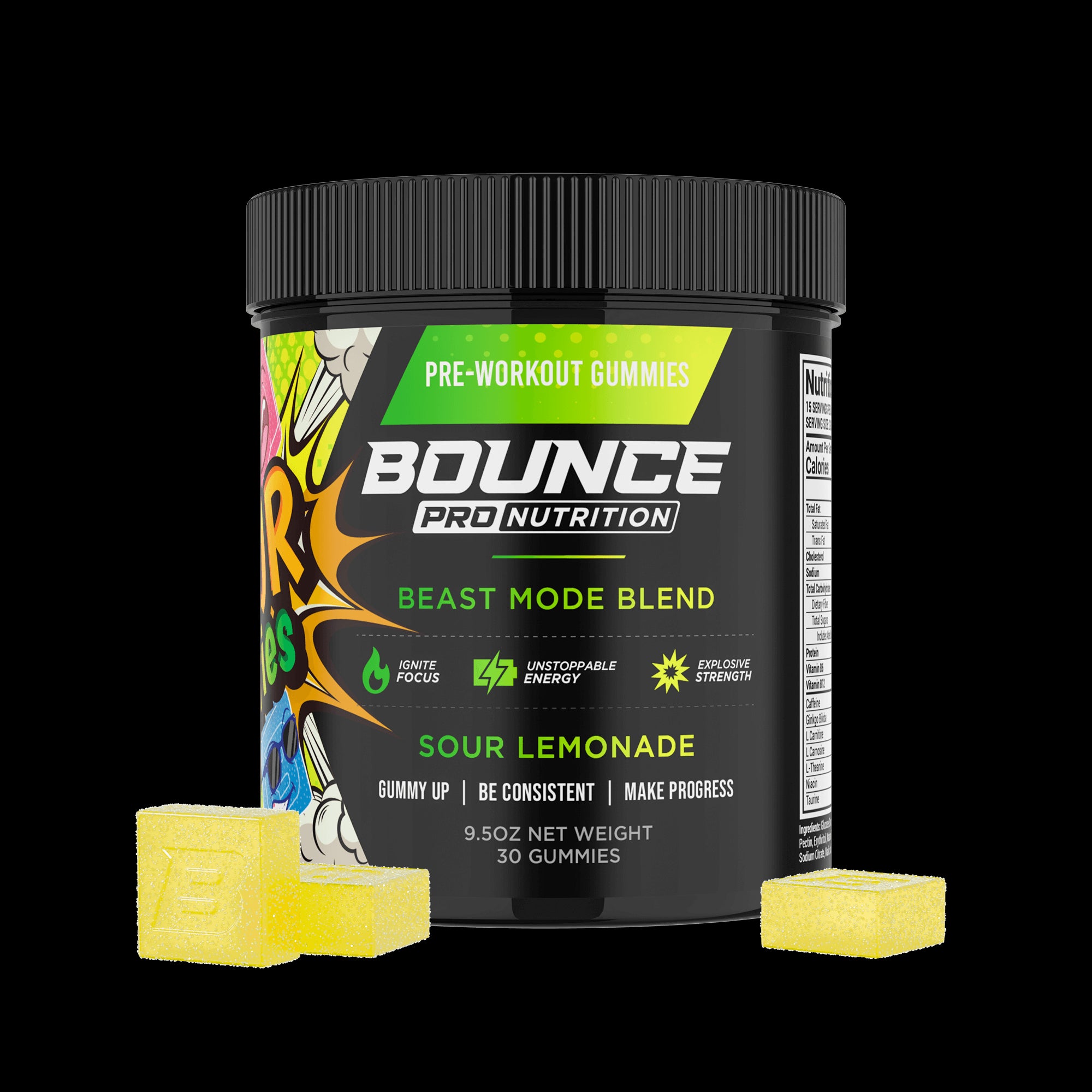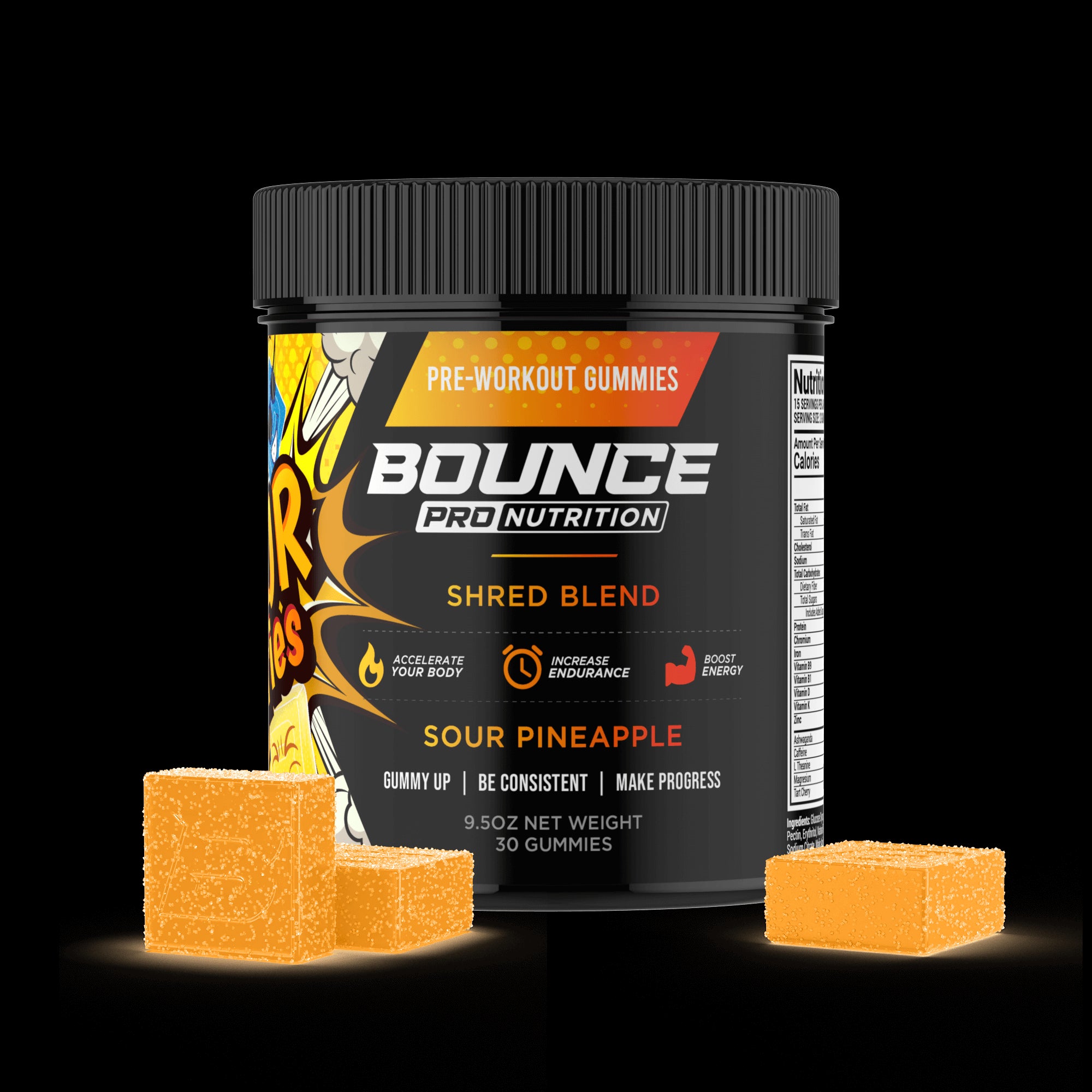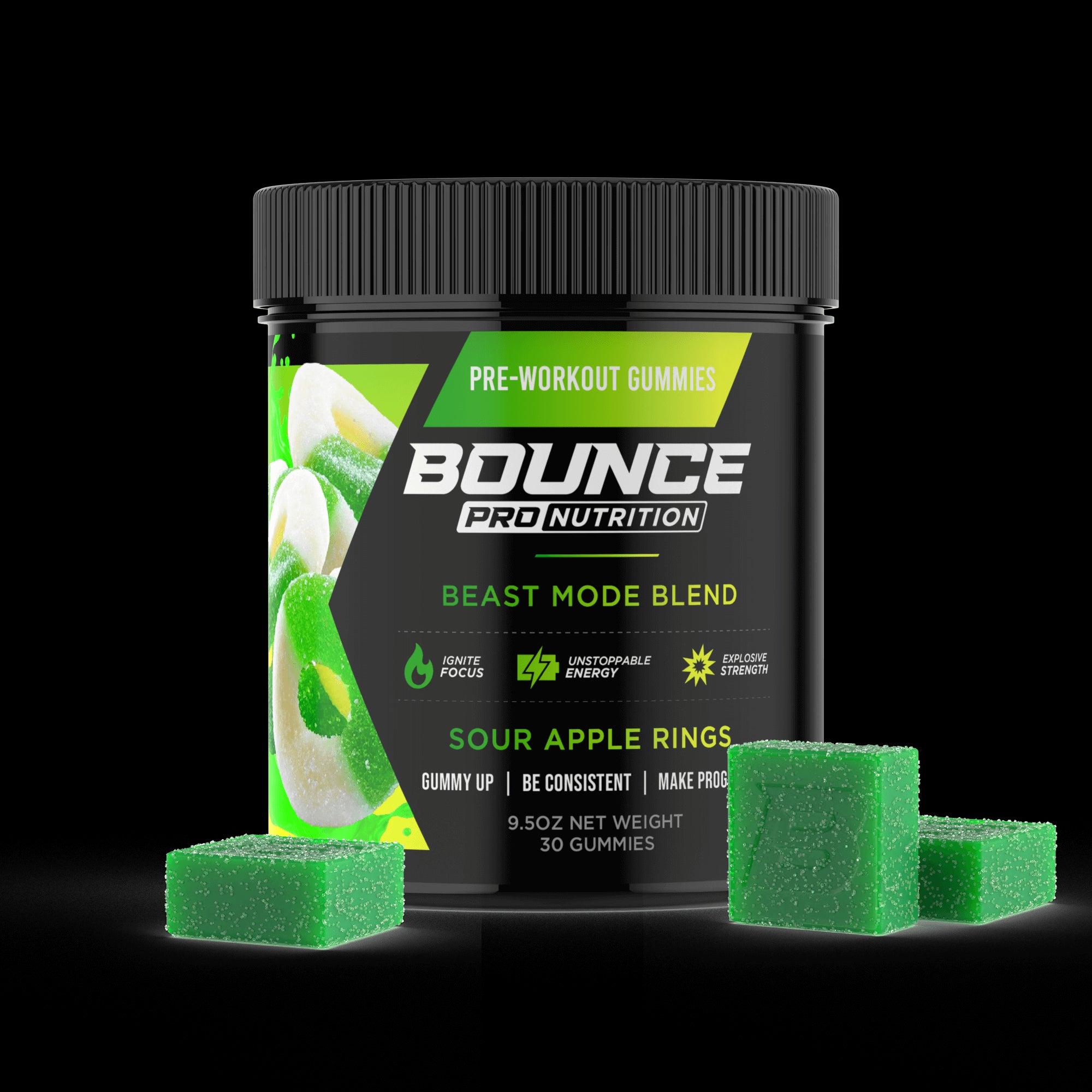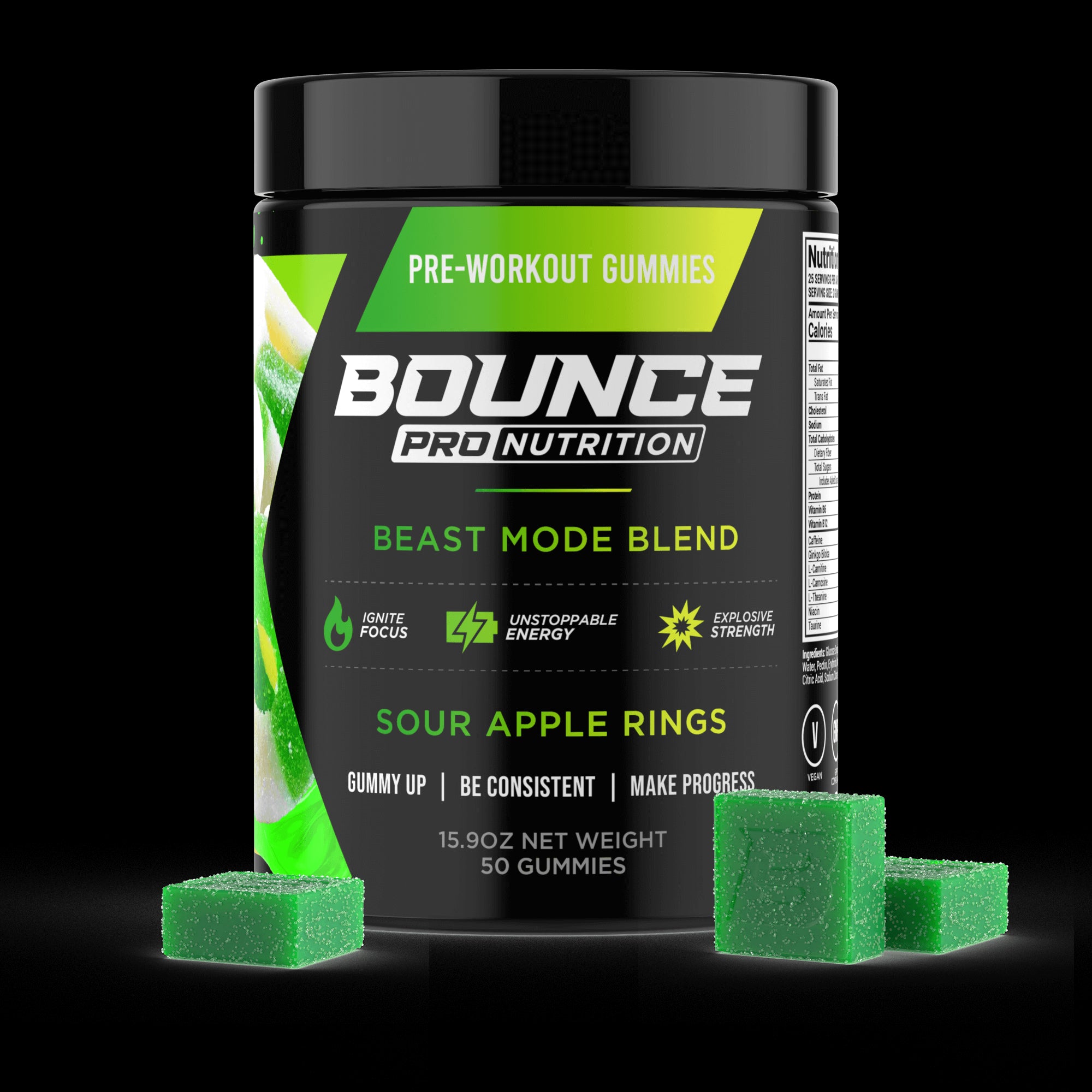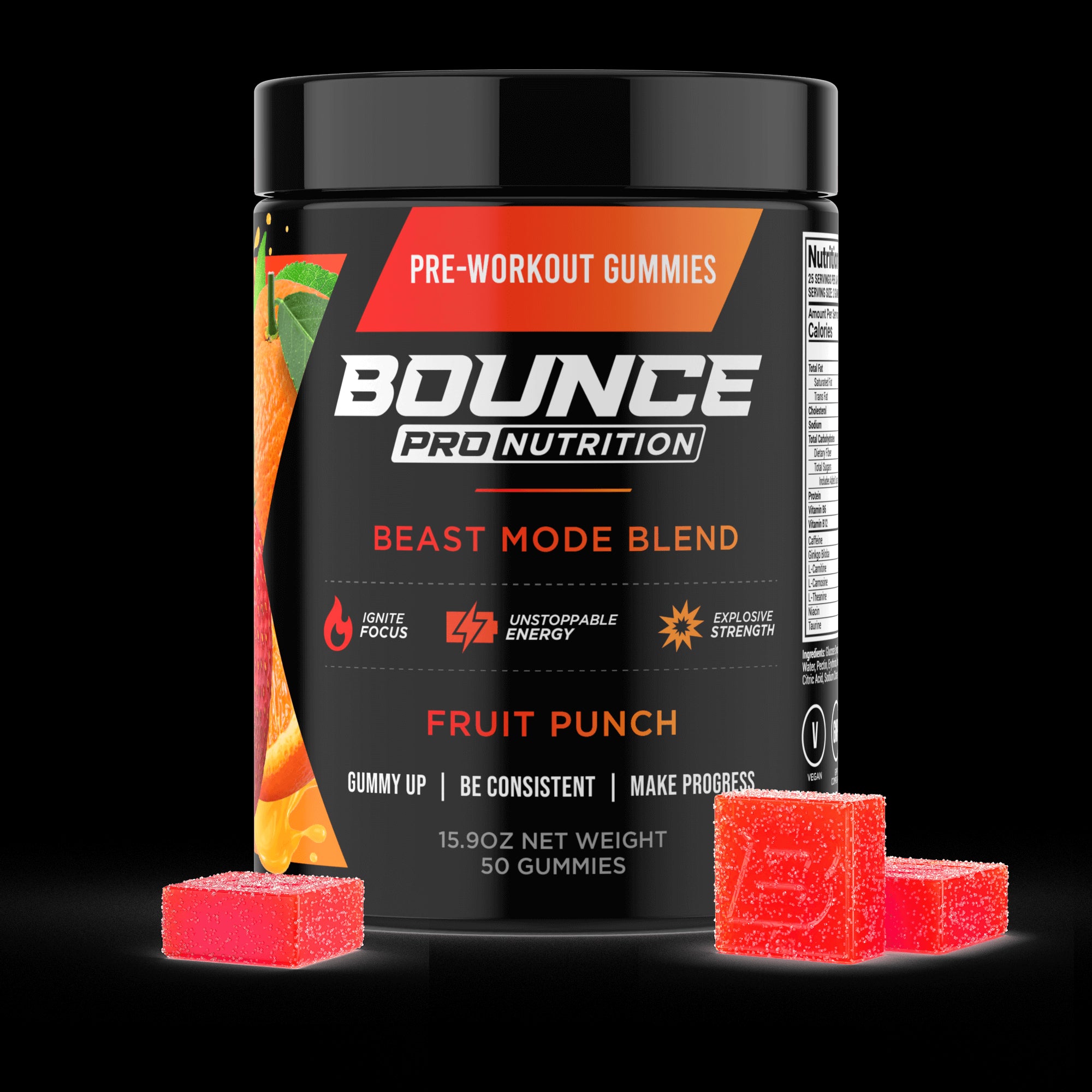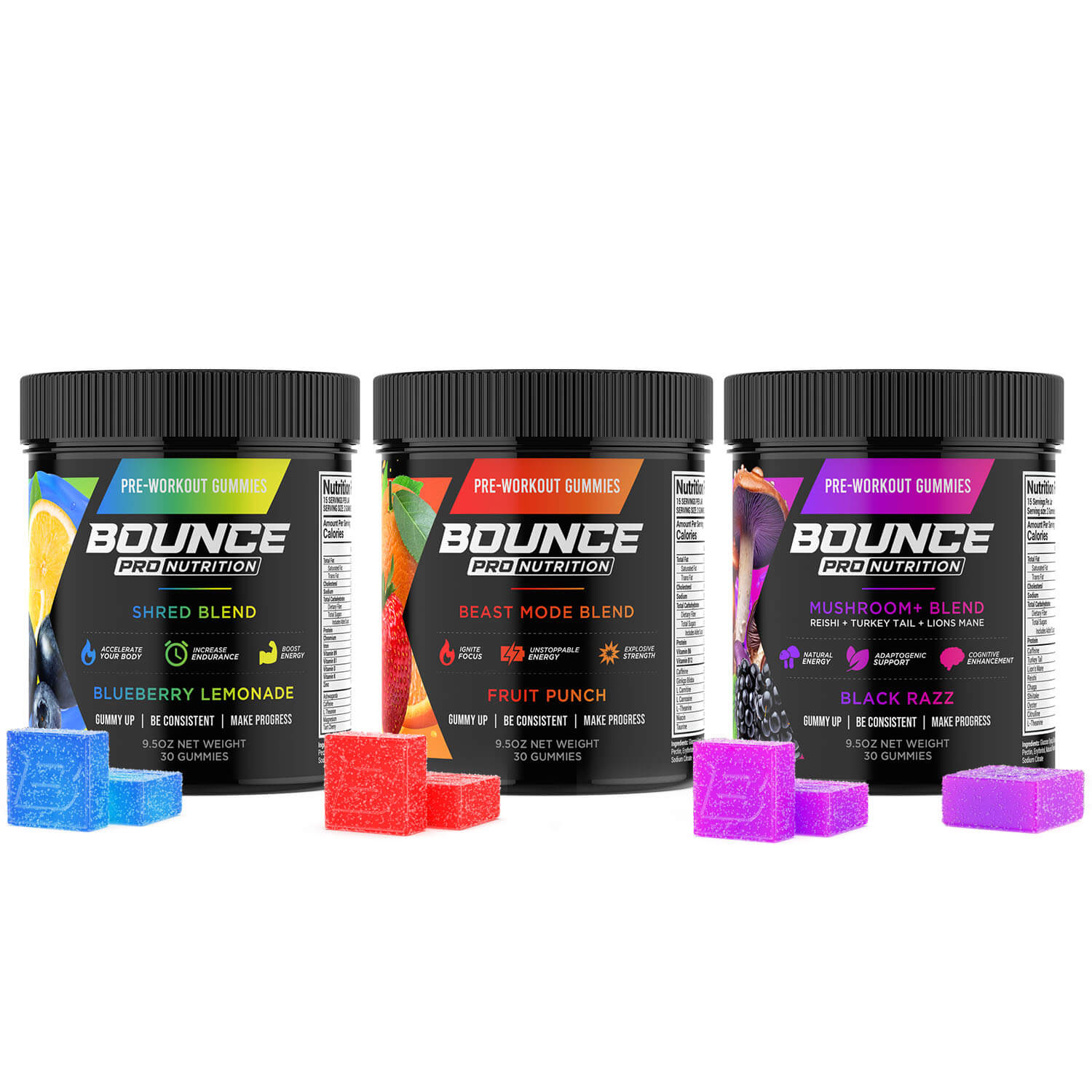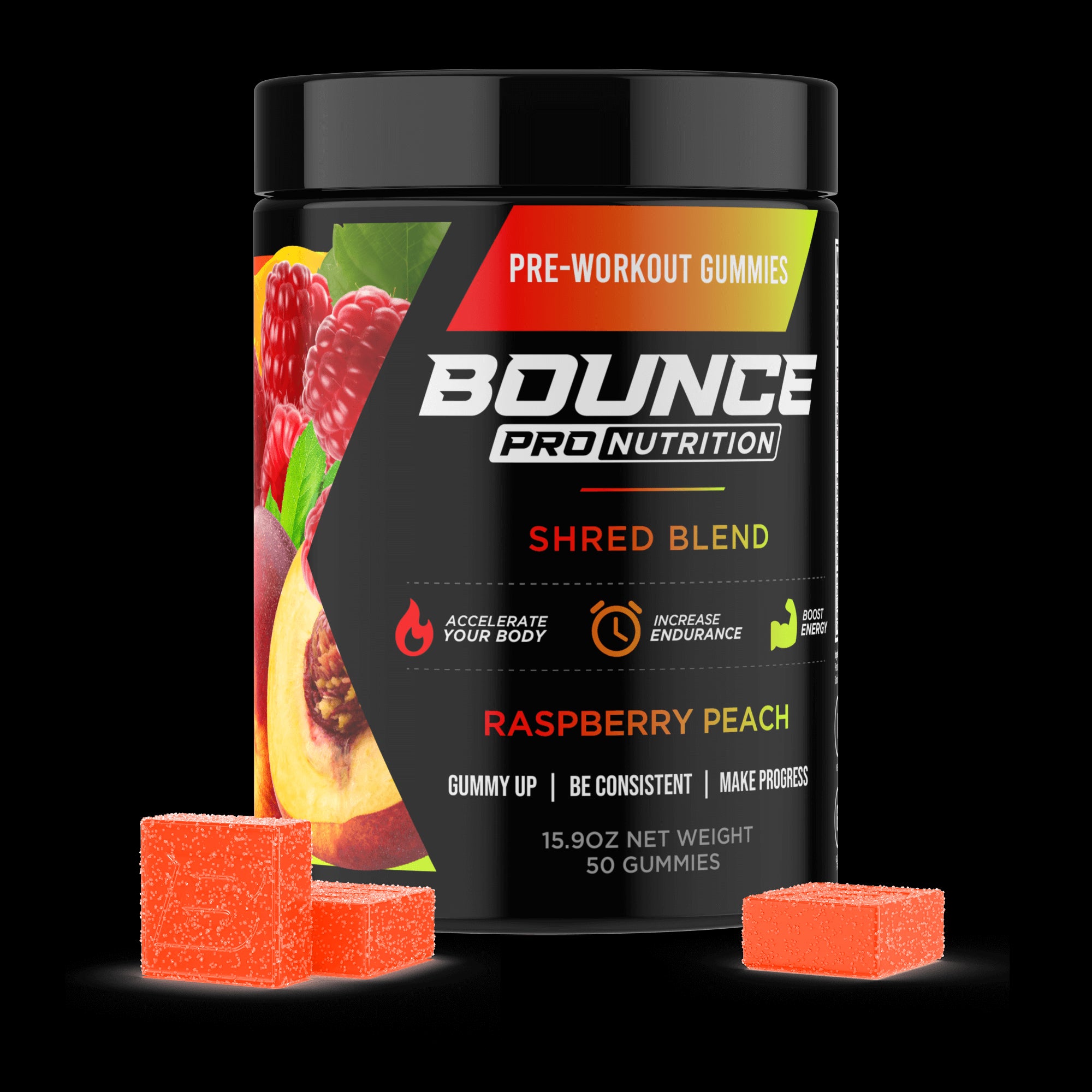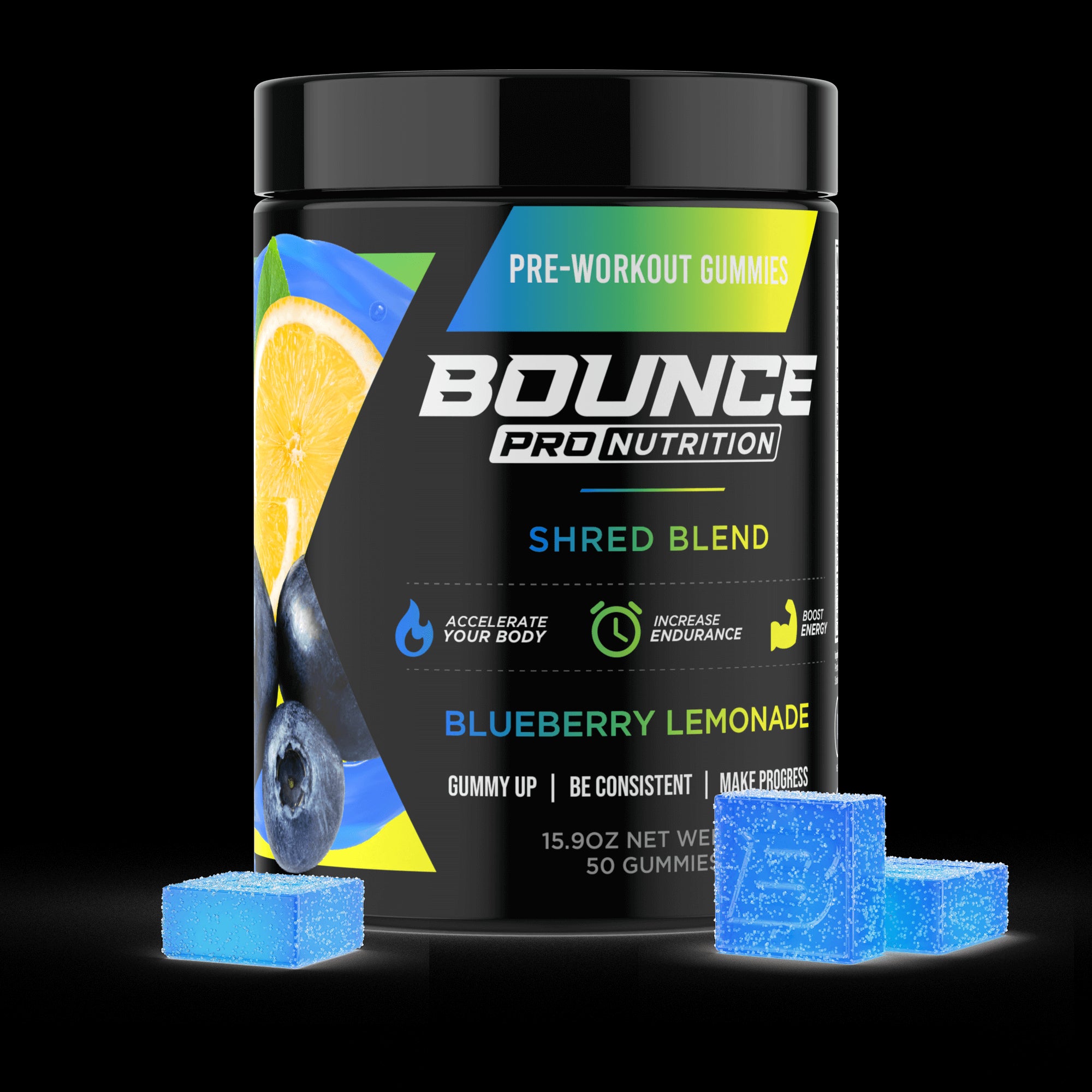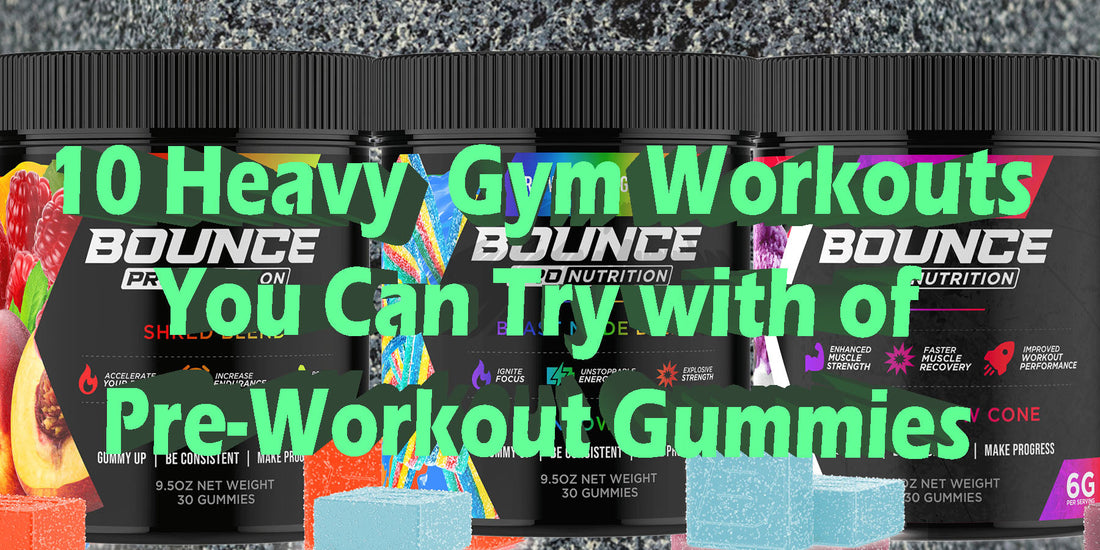Picture this: you’re standing in front of a fully-equipped gym, your playlist is queued up, and your water bottle is full. You’re ready to give it your all. But then, it hits you—you’re dragging. The idea of lifting that heavy barbell or hitting those intense cardio intervals feels more daunting than ever. Enter pre-workout gummies, your secret weapon for powering through those demanding gym sessions.
Delicious, convenient, and packed with energy-boosting ingredients, they’re here to help you tackle workouts that test your limits. So, what exactly constitutes a heavy or intense workout, and which ones should you try with the help of these pocket-sized powerhouses? Stick around to find out.
TO BUY PRE-WORKOUT GUMMIES CLICK HERE
What’s Considered to Be a Heavy or Intense Gym Workout?
Not all workouts are created equal. While some involve lighter exercises or stretches that maintain flexibility and mobility, others push your physical and mental boundaries. Heavy or intense gym workouts typically:
-
Demand Maximum Effort: These workouts require you to give 80-100% of your energy for short bursts or sustained periods.
-
Incorporate Heavy Weights: Strength-based routines often include lifting weights at 75-90% of your one-rep max (1RM).
-
Combine Explosiveness and Endurance: High-intensity interval training (HIIT) or circuits with minimal rest are prime examples.
-
Engage Multiple Muscle Groups: Compound exercises like deadlifts, squats, and pull-ups target several areas at once, making them intense by nature.
These workouts are designed to build strength, improve cardiovascular fitness, and challenge your body in ways that lighter routines simply can’t.
Who Should Be Attempting to Do Heavy or Intense Workout Sessions?
While the idea of a grueling gym session may appeal to anyone seeking results, not everyone should dive headfirst into heavy or intense workouts. These sessions are best suited for:
-
Intermediate to Advanced Athletes: Individuals who have a solid foundation in fitness and training, with a history of regular, moderate to advanced workouts. These types of athletes typically have the stamina, strength, and recovery ability to push their bodies to higher levels of intensity. They can benefit from challenging themselves with heavy and intense workouts to continue making progress, such as improving strength, endurance, or performance in their specific sport.
-
Those with Clear Goals: People aiming for specific goals such as increasing muscle mass, improving athletic performance, or reaching personal milestones (e.g., running a marathon, lifting a personal best, or achieving a competitive physique). Intense workouts can help individuals break through fitness plateaus and achieve rapid progress toward their goals. Heavy lifting, HIIT, and other tough workout types can accelerate muscle growth, fat loss, and cardiovascular endurance.
-
Well-Conditioned Individuals: People who have built up a good level of physical conditioning through consistent exercise, including strength training, cardiovascular work, and flexibility exercises. If you have a solid fitness base, intense workouts are often necessary to continue improving. These workouts allow individuals to push past their current abilities and promote further cardiovascular adaptation, muscle growth, and stamina.
-
People Looking for Increased Mental Toughness: Individuals who are mentally prepared to face tough challenges, willing to push their limits, and are not deterred by discomfort or fatigue. Intense workouts can help develop mental fortitude, discipline, and resilience. They are a way to build mental toughness by pushing the boundaries of what's comfortable, which can translate into other areas of life.
-
People with Access to Professional Guidance: Those who are guided by personal trainers, coaches, or fitness professionals with experience in programming intense workouts. With professional guidance, individuals can perform heavy and intense workouts safely and effectively. Experts can tailor exercises to specific needs, monitor form to avoid injury, and ensure recovery is optimized.
-
Bodybuilders & Strength Trainers: People specifically focused on building muscle or increasing strength. Intense resistance training, such as heavy lifting, is crucial for muscle hypertrophy (growth) and strength development. Bodybuilders and strength athletes regularly engage in intense workouts to maximize their training gains and build muscle.
-
Fitness Enthusiasts Interested in High-Intensity Sports: Those interested in sports such as CrossFit, boxing, martial arts, and other high-intensity disciplines. Sports with intense physical demands require individuals to have high levels of strength, stamina, and agility. Intense workouts are fundamental to mastering these sports, enhancing performance, and avoiding performance stagnation.
Note: Anyone with medical conditions or injuries should consult a healthcare professional before attempting.
Key Benefits of Heavy or Intense Gym Workouts
Doing this type of workout can be beneficial for a variety of reasons, be it physical mental, or other purposes.
Physical Health:
-
Increased Muscle Mass and Strength: Intense workouts, such as weightlifting and resistance training, lead to muscle hypertrophy (growth), resulting in increased muscle mass and overall strength.
-
Boosted Metabolism: Heavy exercise increases the metabolic rate, promoting more calories burned even at rest, which aids in fat loss and body composition improvement.
-
Improved Bone Density: High-intensity weight-bearing exercises help increase bone density, reducing the risk of osteoporosis and fractures as you age.
-
Enhanced Cardiovascular Health: Intense workouts, such as HIIT (High-Intensity Interval Training), improve heart health by increasing cardiovascular endurance and strengthening the heart.
-
Fat Loss and Body Composition: Heavy workouts elevate calorie burn and promote fat loss, resulting in improved body composition with higher muscle mass and reduced body fat percentage.
-
Better Joint Health: While intense workouts challenge the body, they also strengthen tendons, ligaments, and joints, improving overall stability and mobility.
-
Increased Endurance: Intense gym workouts improve both aerobic and anaerobic endurance, allowing individuals to perform strenuous physical tasks for longer periods.
Mental Health:
-
Enhanced Mood and Reduced Stress: Intense physical activity triggers the release of endorphins, which improve mood and provide a natural stress-relieving effect.
-
Mental Clarity and Focus: Intense exercise improves cognitive function, sharpens focus, and enhances memory retention, promoting mental clarity both during and after workouts.
-
Better Sleep: Heavy workouts help regulate sleep patterns, leading to deeper and more restorative sleep, which improves overall mental well-being.
-
Increased Confidence: Achieving new personal bests in strength or endurance during intense workouts boosts self-esteem, fosters body confidence, and strengthens a positive self-image.
-
Alleviation of Anxiety and Depression: High-intensity exercise can have therapeutic effects, helping to alleviate symptoms of anxiety and depression by stimulating the release of mood-enhancing neurotransmitters.
-
Mental Resilience: The challenge of intense workouts builds mental toughness, as individuals push past physical and mental limits, fostering a sense of accomplishment and improved stress management.
Other Benefits:
-
Improved Discipline and Consistency: The intensity of gym workouts requires dedication and discipline, leading to the development of consistent workout habits that benefit overall health.
-
Increased Motivation: Achieving challenging fitness goals or mastering difficult exercises provides a sense of accomplishment and fuels motivation to continue progressing.
-
Community and Social Connections: Intense workouts, particularly in group settings like boot camps or fitness classes, provide a sense of camaraderie, offering opportunities for social interaction and support.
-
Enhanced Performance in Sports: Athletes or fitness enthusiasts who engage in intense training experience improved performance in their respective sports, with gains in strength, speed, agility, and overall fitness.
-
Long-Term Health Benefits: Consistent participation in intense workouts lowers the risk of chronic diseases, such as diabetes, heart disease, and metabolic syndrome, while also enhancing longevity and quality of life.
-
Time-Efficiency: High-intensity workouts such as HIIT allow individuals to achieve significant fitness benefits in a shorter period, making it easier to incorporate into a busy schedule while maximizing results.
Important Considerations
Of course, there are some key considerations to keep in mind:
-
Medical Clearance: Once again, anyone with pre-existing health conditions, injuries, or concerns should seek medical advice before attempting intense exercise regimens.
-
Gradual Progression: For beginners or those new to intense workouts, it’s critical to build strength and stamina gradually to avoid overtraining or injury.
-
Recovery Time: High-intensity workouts place significant strain on the body, so adequate rest and recovery are essential to allow muscles to repair and grow.
-
Listening to Your Body: Individuals should be mindful of their limits and avoid pushing too hard to prevent injury.
What are Pre-Workout Gummies and Why Might Someone Take Them for Heavy or Intense Gym Workouts?
Pre-workout gummies are the new favorite among fitness enthusiasts. Packed with ingredients like caffeine, B vitamins, beta-alanine, and amino acids, these gummies are formulated to boost energy, enhance focus, and improve performance during workouts, particularly demanding ones. You see, pre-workout gummies are convenient, chewable supplements that’re designed to be consumed before exercise to enhance workout performance. And unlike traditional pre-workout supplements, gummies are easy to carry, don’t require any preparation, and often taste quite sensational.
10 Heavy or Intense Gym Workouts You Can Try with the Help of Pre-Workout Gummies
So, you’ve taken your pre-workout gummies, and you’re ready to crush it. Let’s cover ten heavy or intense gym workouts that can take your fitness game to the next level.
Heavy or Intense Workout #1: Deadlifts
Deadlifts are a compound strength training exercise that primarily targets the muscles in the lower body, such as the hamstrings, glutes, and lower back, but also engages the upper body muscles, including the forearms, traps, and core. The exercise involves lifting a weighted barbell or other resistance from the ground to a standing position, then returning it to the floor. To perform a standard deadlift:
-
Positioning: Stand with your feet shoulder-width apart, with the barbell over the middle of your feet.
-
Grip: Bend at the hips and knees to lower your torso, then grip the barbell with your hands just outside your knees, either using a double overhand grip or a mixed grip (one hand overhand, one hand underhand).
-
Lift: Push through your heels, keeping your back straight and chest up, to stand tall, lifting the barbell. The bar should remain close to your body as you stand up.
-
Lowering: To return the bar to the ground, reverse the movement by pushing your hips back and bending your knees, keeping the bar close to your body, until it reaches the ground.
Deadlifts are considered a full-body exercise that builds strength, power, and stability, and are commonly used in powerlifting, bodybuilding, and general fitness training. Proper form is crucial to avoid injury, especially to the lower back.
Heavy or Intense Workout #2: Tabata-Style HIIT
Tabata-style HIIT (High-Intensity Interval Training) is a specific form of interval training that alternates between short, intense bursts of exercise and brief rest periods. It was developed by Dr. Izumi Tabata, a Japanese scientist, in the 1990s. Tabata-style HIIT is known for its efficiency and effectiveness, typically involving a 4-minute workout with 20 seconds of maximum effort exercise followed by 10 seconds of rest, repeated for a total of 8 rounds.
This structure makes Tabata workouts incredibly efficient for improving cardiovascular fitness, endurance, and strength in a short amount of time. It's also a great way to burn fat because of its high intensity and the afterburn effect, where the body continues to burn calories even after the workout is finished.
Tabata can be modified to suit various fitness levels and can incorporate different exercises, such as bodyweight movements, weightlifting, or cardio exercises. I t's especially popular for people who want a time-effective, high-intensity workout that pushes their physical limits.
Heavy or Intense Workout #3 Squat Superset with Lunges
Although it can be done without weights, if you want to take it up a notch, combine heavy barbell squats with walking lunges to annihilate your lower body. Perform 5 sets of squats at 75-85% of your 1RM, immediately followed by 20 walking lunges (10 per leg) with dumbbells.
This superset is effective for building strength and muscle in the lower body, while also improving balance, coordination, and endurance. The combination of squats and lunges targets a wide range of muscles, providing a balanced workout for the legs.
Heavy or Intense Workout #4. Weighted Pull-Up Progressions
Pull-ups are challenging enough, but adding weight takes them to a whole new level. Weighted pull-up progressions are a series of exercises and steps designed to build strength and technique for performing pull-ups with added resistance. Weighted pull-ups involve adding extra weight (usually a weight belt, vest, or dumbbell) to the body while doing pull-ups to increase the intensity and target the muscles in the upper back, arms, and shoulders more effectively. The progression steps for weighted pull-ups are:
-
Mastering Bodyweight Pull-Ups: Before adding weight, you should be able to perform at least 8-10 controlled bodyweight pull-ups with proper form. This foundational strength is necessary for progressing to weighted pull-ups.
-
Assisted Pull-Ups (if needed): If you are not yet comfortable doing bodyweight pull-ups, start with assisted variations, such as:
-
Resistance Band Pull-Ups: Attach a resistance band to the pull-up bar, stepping into the band with your feet for assistance as you pull yourself up.
-
Negative Pull-Ups: Jump or use a step to get your chin above the bar, and then slowly lower yourself down with control.
-
Pull-Up Negatives: If you're already comfortable with bodyweight pull-ups but struggle with weighted variations, start with negative pull-ups. These are slow, controlled lowering phases of the pull-up where you focus on descending for 3-5 seconds. This helps build strength in the muscles used for pull-ups.
-
Adding Weight Gradually: Once you're consistently performing bodyweight pull-ups with good form, start adding weight gradually. Here's how you can do this:
-
Start with small increments: Add a small amount of weight, such as a 5-10lb. dumbbell or a small weight plate attached to a weight belt.
-
Use a Weight Belt or Vest: A weight belt is the most common method for weighted pull-ups, as it allows you to adjust the weight easily. A weighted vest is another option, though it may be less precise in terms of weight distribution.
-
Performing Weighted Pull-Ups: This is done in several steps:
-
Hang from the pull-up bar with your hands shoulder-width apart.
-
Initiate the pull-up by retracting your scapula (pulling your shoulder blades down and back).
-
Pull yourself up until your chin is above the bar.
-
Lower yourself back down in a controlled manner.
-
Complete the desired number of repetitions, typically 3-6 reps for weighted pull-ups.
-
Progressive Overload: To continue progressing, gradually increase the weight as you get stronger, while maintaining proper form. You can also vary the number of repetitions and sets:
-
Start with 3-4 sets of 3-6 reps with added weight.
-
Once you're able to complete 8-10 reps with the added weight, increase the weight again.
-
Accessory Exercises for Pull-Up Strength: To complement weighted pull-up progressions, incorporate accessory exercises that target the same muscle groups:
-
Lat Pulldowns: Helps build strength in the lats and upper back.
-
Rows (Barbell, Dumbbell, or Cable Rows): Builds overall back and bicep strength.
-
Bicep Curls: Strengthens the arms for better pulling power.
Heavy or Intense Workout #5: Sprint Intervals on the Treadmill
Sprints are brutal but effective. Sprint intervals on the treadmill are really an effective and efficient way to challenge your body, improve fitness, and burn calories quickly. Alternate 30 seconds of maximum effort sprints with 90 seconds of walking or light jogging. Repeat this cycle for 8-10 rounds. Pre-workout gummies shine here, as they help sustain your energy during those intense bursts.
Heavy or Intense Workout #6. Clean and Press Circuits
Clean and Press Circuits are a type of full-body workout that combine two powerful strength exercises: the clean and the press. These exercises are often performed in a circuit-style format, where you move from one exercise to the next with minimal rest, targeting multiple muscle groups and improving both strength and cardiovascular fitness.
Breakdown of the Clean and Press:
-
Clean: This is the first part of the exercise and involves lifting a weight (usually a barbell, dumbbell, or kettlebell) from the floor to a rack position at shoulder height. The clean is a dynamic movement that requires explosive power and engages the lower body, core, and upper body muscles.
-
How to Perform the Clean: Simply do the following:
-
Stand with feet shoulder-width apart, and the weight in front of you.
-
Squat down and grip the weight with both hands (overhand grip).
-
Drive through your heels, extending your hips and knees explosively to lift the weight.
-
As the weight rises, shrug your shoulders and pull the elbows high to bring the weight to the front rack position on your shoulders, catching it with your arms.
-
Press: Once the clean is complete and the weight is at shoulder height, you move into the press phase. This is an overhead press, where you press the weight up above your head, fully extending your arms.
-
How to Perform the Press: Simply do the following:
-
From the front rack position (where the weight is resting on your shoulders), engage your core and press the weight overhead until your arms are fully extended.
-
Lower the weight back down to the starting position at your shoulders, keeping control of the movement.
Clean and Press Circuits:
In a circuit, you would typically combine the clean and press with other exercises for a total-body workout. The exercises are performed in sequence with short rest periods in between. A circuit can consist of a variety of movements targeting different muscle groups, often in a timed format or with a set number of rounds. An example of a clean and press circuit would be:
-
Clean and Press (perform 8-10 reps)
-
Bodyweight Squats (perform 15-20 reps)
-
Push-Ups (perform 10-15 reps)
-
Plank (hold for 30-60 seconds)
-
Kettlebell Swings (perform 12-15 reps)
Rest for 1-2 minutes after completing one full circuit, then repeat for 3-5 rounds, depending on your fitness level.
Heavy or Intense Workout #7: Heavy Bench Press with Drop Sets
A heavy bench press with drop sets is a technique used in strength training to maximize muscle growth and endurance. The exercise involves performing a heavy bench press (with a weight you can lift for about 4-6 reps) and then immediately reducing the weight to continue the set and perform additional repetitions, typically aiming for higher rep ranges. This technique combines the benefits of both strength training (heavy weight) and hypertrophy (muscle growth with higher reps).
How a Heavy Bench Press with Drop Sets Works
These steps are pretty straightforward:
-
Warm-up: Start with a proper warm-up to prepare your chest, shoulders, and triceps for the heavy lift. You can use lighter weights and perform a few sets of 8-12 reps to activate the muscles and increase blood flow.
-
First Set (Heavy Bench Press): Begin with a heavy bench press using a weight that allows you to complete 4-6 repetitions with proper form. This is the "heavy" portion of the exercise, focusing on strength. Perform your set to failure or near failure (where you can no longer complete a rep with good form).
-
Drop Set (Lighten the Weight): After completing your heavy set, immediately reduce the weight by 20-30%. This is your “drop”. Without resting, continue to perform more reps, aiming for a higher rep range, such as 8-12 or even 15-20 reps, until failure.
-
Additional Drop Sets: You can drop the weight again (and possibly once more) for additional sets of high-rep bench presses. Typically, you perform 2-3 drops per set, but this can vary depending on your training goals and fitness level.
-
Rest and Repeat: After completing a heavy bench press with drop sets, rest for 2-3 minutes before performing another heavy bench press set with the same process. You can choose to do 3-4 rounds of this technique or more depending on your training goals.
Example of a Heavy Bench Press with Drop Set:
This is one of the top ways of doing it:
-
Set 1: Bench press 200 lbs. for 5 reps (heavy set)
-
Set 2 (first drop): Drop the weight to 150 lbs. and perform 10-12 reps.
-
Set 3 (second drop): Drop the weight to 100 lbs. and perform as many reps as you can (usually 15-20 reps).
Heavy or Intense Workout #8: Farmer’s Carry Challenges
Grip two heavy dumbbells or kettlebells and walk a designated distance—typically 50-100 feet. Focus on maintaining a strong posture and engaging your core. Increase the weight or distance as you progress. It’s a deceptively simple but highly effective workout.
Heavy or Intense Workout #9: Weighted Dips and Triceps Burnout
Weighted dips and triceps burnout are two effective exercises commonly used in strength training to target the triceps and the chest, shoulders, and upper body muscles. Both exercises are often used to enhance strength, muscle growth, and endurance, particularly in the triceps area.
Weighted Dips
Weighted dips are a progression of the standard dip exercise, where you add external weight (such as a weight belt, vest, or dumbbell) to increase the resistance. This added weight makes the exercise more challenging and helps to build strength and size in the triceps, chest, and shoulders. To perform weighted dips:
-
Set-Up: Find parallel bars (or dip station) and grasp the bars with your hands, positioning them slightly wider than shoulder-width apart.
-
Add Weight: Strap a weight belt with a weight plate attached to it or hold a dumbbell between your legs or in a dip belt to add resistance. You can also use a weighted vest.
-
Starting Position: Begin by holding yourself up with your arms extended, legs straight down or bent slightly at the knees.
-
Lower Yourself: Slowly lower your body by bending your elbows, keeping them close to your sides. Aim for a 90-degree angle at your elbows or slightly deeper, depending on your flexibility and comfort level.
-
Press Up: Push yourself back up to the starting position by straightening your arms, engaging your triceps, chest, and shoulders.
-
Reps and Sets: Perform the desired number of repetitions (typically 6-12 for muscle growth), followed by a short rest (1-2 minutes), then repeat for 3-4 sets.
Triceps Burnout
Triceps burnout is a training technique used to push the triceps to failure by performing exercises that target the triceps muscles in a high-rep, low-rest, or high-intensity format. The goal is to exhaust the triceps completely, forcing them to work beyond their normal capacity, leading to muscle growth and endurance. To perform a triceps burnout:
-
Start with Compound Movements: Begin by performing a heavy compound exercise that targets the triceps, such as weighted dips, close-grip bench presses, or triceps pushdowns.
-
Move to Isolation Exercises: Once you have completed the compound exercises, move to isolation exercises that focus specifically on the triceps, such as:
-
Triceps Kickbacks
-
Overhead Triceps Extensions
-
Triceps Pushdowns (using cables)
-
Skull Crushers (Lying Triceps Extensions)
-
Perform High Reps: Do each isolation exercise with high repetitions (typically 12-20 reps per set), performing multiple sets with minimal rest (10-30 seconds between sets) until the triceps are completely fatigued or "burned out".
-
Incorporate Different Angles: Vary the angle and grip of the exercises to ensure that all parts of the triceps (long head, lateral head, and medial head) are worked.
-
Finish with a Burnout Set: After performing all your sets, finish with a final burnout set of 30-50 reps of a triceps exercise (such as bodyweight triceps dips or triceps push-ups), pushing the muscles to total fatigue.
Combining Weighted Dips and Triceps Burnout
You can combine weighted dips with a triceps burnout to maximize the workout’s effectiveness. For instance, after completing your weighted dip sets, you could follow up with a triceps burnout routine using lighter weights or bodyweight exercises like triceps push-ups or kickbacks, allowing your muscles to continue working at a high intensity and promoting muscle growth. An example workout would be:
-
Weighted Dips: 4 sets of 6-8 reps (heavy weight)
-
Close-Grip Bench Press: 3 sets of 8-10 reps
-
Triceps Pushdowns: 3 sets of 12-15 reps (light to moderate weight)
-
Overhead Triceps Extension: 3 sets of 12-15 reps
-
Final Burnout Set: 50 bodyweight triceps dips or 30 triceps push-ups
Heavy or Intense Workout #10: High-Volume Rowing Machine Workout
A high-volume rowing machine workout refers to a workout where the rower performs an extended or intense session on the rowing machine (ergometer), typically focusing on increasing the total number of strokes or time spent rowing. This type of workout is designed to improve cardiovascular endurance, muscular endurance, and overall rowing performance. High-volume workouts often involve longer durations, higher repetitions, or multiple sets, pushing the body to sustain high levels of exertion over an extended period.
Structure of a High-Volume Rowing Machine Workout
The way it’s done is by doing the following:
-
Warm-up: Always start with a 5-10 minute light warm-up on the rowing machine. This should be at a moderate pace, with low resistance, to gradually increase your heart rate and prepare your muscles for the workout. Include some dynamic stretches, focusing on your back, legs, and shoulders to prevent injury.
-
Main Workout:
-
Duration-Based High-Volume Workout: Row for a set period, such as 20-30 minutes, maintaining a consistent moderate to high intensity. Your goal is to maintain steady effort throughout the entire duration. Example: 20 minutes of steady rowing at a pace that allows you to maintain good form, aiming for about 500-700 meters per 2-minute split.
-
Distance-Based High-Volume Workout: Focus on rowing for a specific distance (e.g., 5,000 meters, 10,000 meters, or more). This format helps improve endurance and technique. Example: Row 5,000 meters with short breaks as needed, maintaining a steady stroke rate.
-
Interval-Based High-Volume Workout: Combine rowing with high-intensity intervals, alternating between hard sprints and recovery. For example, row at a fast pace for 1 minute, then row at a slower pace or rest for 1-2 minutes. Repeat this pattern for a longer period or set number of intervals. Example: 10 rounds of 1 minute fast rowing (at 80-90% intensity) followed by 1 minute of slow rowing or rest.
-
Cool-down: After completing the high-volume rowing, cool down with 5-10 minutes of slow rowing. Gradually decrease your intensity to bring your heart rate back to normal. Finish with static stretches, focusing on your legs, back, and shoulders to help prevent stiffness and improve flexibility.
Example High-Volume Rowing Machine Workouts
There are many ways for doing rowing machine workouts, so let’s break a few down:
-
Steady-State Rowing (Endurance Focus):
-
Duration: 30 minutes
-
Intensity: Maintain a consistent, moderate pace for the entire 30 minutes, while also honing in on technique, breathing, and steady effort.
-
Goal: 7,000-8,000 meters.
-
Interval Rowing (Power and Speed Focus):
-
Warm-up: 10 minutes of light rowing
-
Main Workout: 1 minute at high intensity, followed by 1 minute of low intensity or rest. Repeat for 20 rounds.
-
Cool-down: 5-10 minutes of slow rowing.
-
Goal: 10-12 minutes of high-intensity intervals with 1-2 minute recovery periods.
-
Endurance and Power (Longer Distance Focus):
-
Warm-up: 10 minutes at a moderate pace
-
Main Workout: Row 10,000 meters at a moderate pace (maintaining a consistent stroke rate and power).
-
Cool-down: 5-10 minutes at a slow pace.
-
Goal: Rowing 10,000 meters in 45-60 minutes.
Why Choose Bounce Nutrition for All Your Pre-workout Gummies Needs?
When it comes to pre-workout gummies, Bounce Nutrition is a name you can trust. Our dedication to quality, innovation, and effectiveness makes us a standout choice for fitness enthusiasts. Specifically, here’s why Bounce Nutrition should be your brand of choice:
-
Science-Driven Formulas: Each gummy is formulated using the latest research in sports nutrition to ensure maximum effectiveness.
-
Premium Ingredients: We prioritize natural, high-quality ingredients, free from artificial additives and fillers.
-
Tailored Solutions: With a range of options designed for different fitness goals, Bounce Nutrition has something for everyone, whether you’re looking to boost energy, enhance focus, or improve recovery.
-
Vegan and Allergy-Friendly Options: Our gummies cater to a variety of dietary needs, making them accessible to a broad audience.
-
Transparent Labeling: Clear ingredient lists, and nutritional information ensure you know exactly what you’re putting into your body.
-
Sustainable Practices: Committed to eco-friendly packaging and production methods, so you can feel good about supporting a brand that cares for the planet.
-
Positive Customer Reviews: Fitness enthusiasts from all walks of life rave about the effectiveness and taste of our gummies.
By going with Bounce, you’re not just buying a product—you’re investing in your health and well-being.
Pre-Workout Gummies: A Nice Complementary Addition to Your Heavy or Intense Workout Regimen
Heavy or intense workout sessions are suitable for individuals who are physically ready, have clear fitness goals, and are guided by proper training principles. Whether you’re an athlete, fitness enthusiast, or someone looking for mental and physical challenges, these workouts can be beneficial—if done safely and with appropriate preparation. And since these are not for the faint of heart, they require grit, determination, and a solid source of energy.
Pre-workout gummies can be that game-changing addition to your regimen, offering a tasty, convenient way to fuel your body and mind. From explosive lifts to grueling cardio sessions, these gummies can help you power through and achieve your fitness goals – as long as you do the workouts right and combine these gummies with other healthy lifestyle habits. So, next time you’re gearing up for a demanding session, pop a Bounce Nutrition Pre-Workout Gummy, crank up your favorite playlist, and let the gains begin!

